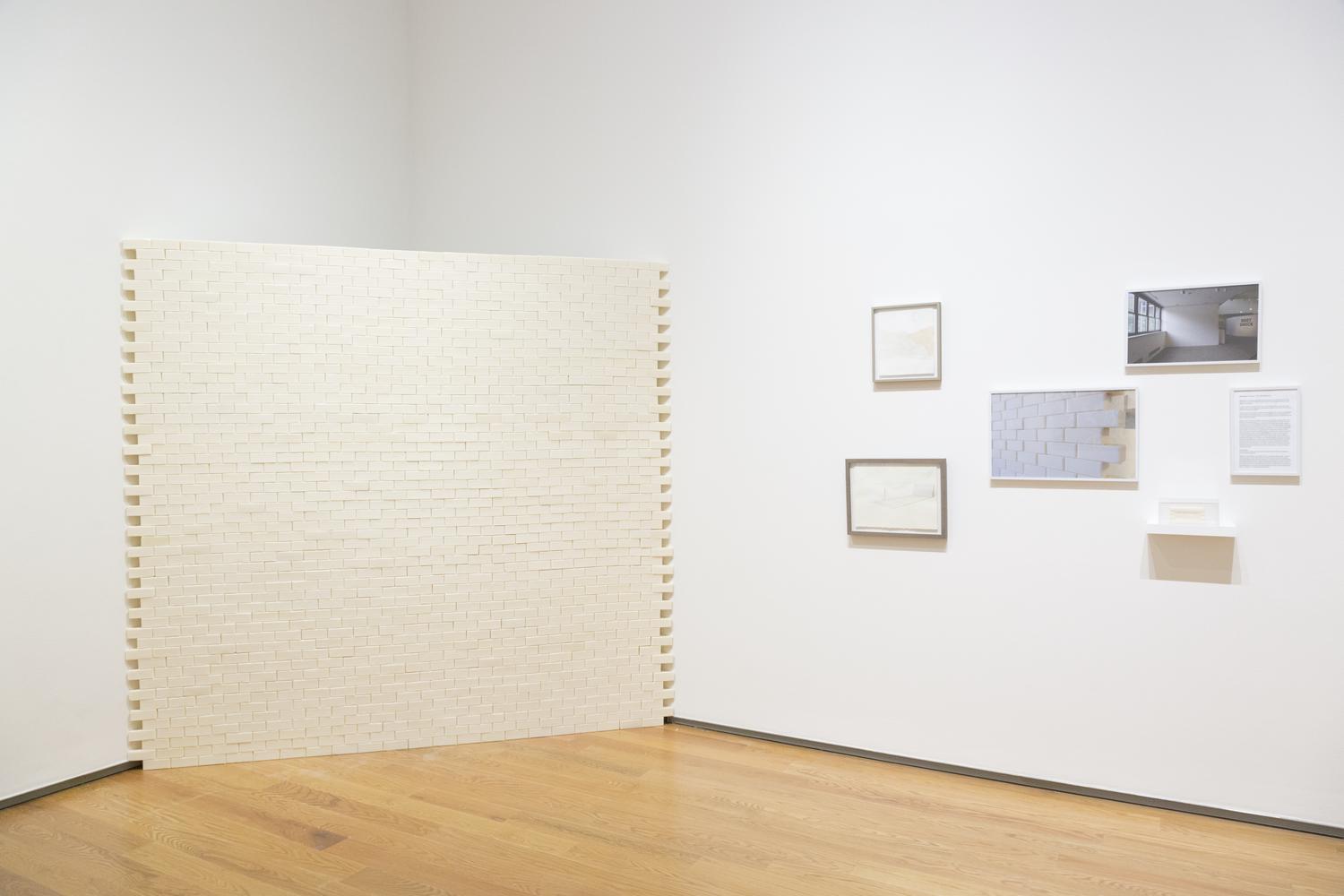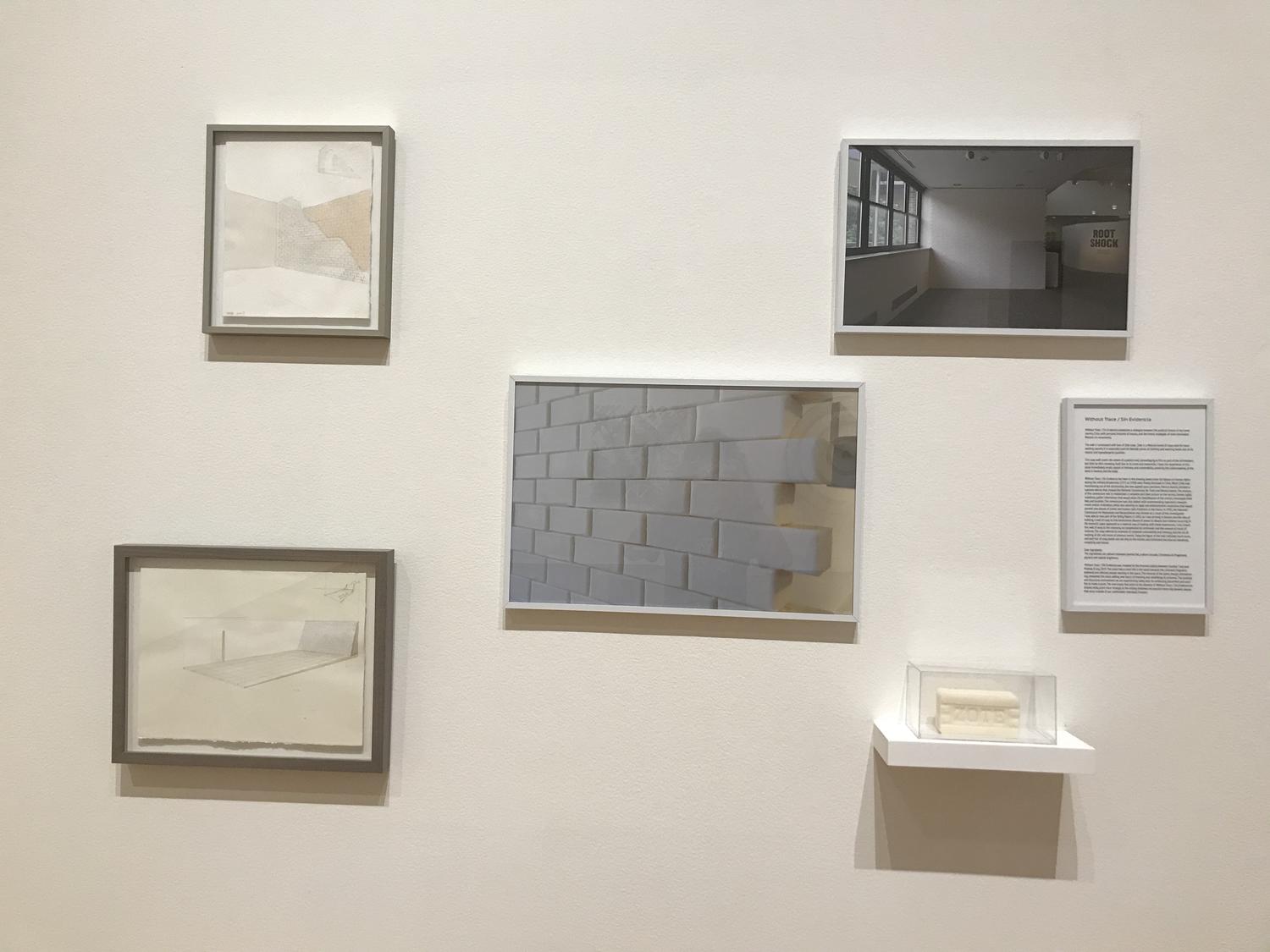The Davis Museum is closed for Wellesley College’s winter break. Please join us at our spring opening celebration on February 5, 2026, at 4 pm.
Daniela Rivera

Installation view, Q20: Wellesley Faculty Artists, Davis Museum at Wellesley College, Wellesley, MA.
Artist’s Statement
Without Trace/Sin Evidencia establishes a dialogue between the political history of my home country, Chile, with personal histories of trauma, and the formal strategies of male dominated Western art movements. The wall is constructed with bars of Zote soap. Zote is a Mexican brand used for hand washing laundry, especially for “delicates” due to its neutral and hypoallergenic qualities.
This soap wall is camouflaged at first, as part of the gallery architecture, but little by little reveals itself due to its scent and materiality. I hope the experience of this piece immediately recalls spaces of intimacy and vulnerability, centering the understanding of the work in memory and the body.
Without Trace/Sin Evidencia has been on the drawing board since the abuses to human rights during the military dictatorship (1973-1990) were finally disclosed in Chile. During the transition out of dictatorship, the new agreed-upon president, Patricio Aylwin, dictated a supreme decree that created the National Commission for Truth and Reconciliation. Its mission was to complete a clear picture on the serious human rights violations, gather information that would allow the identification of the victims, investigate their fate, and location. The commission was also tasked with recommending reparation measurements and/or vindication, while also advising on legal and administrative resolutions that would prevent new abuses of power and human rights violations in the future. In 1992 the National Commission for Reparation and Reconciliation was formed as a result of the investigation. I read part of the Rettig Report in 2002, as I was arriving in Boston, and the idea of building a wall of soap to link institutional abuses of power to abuses and violence occurring in the domestic sphere appeared as a material way of dealing with these experiences. I also linked this wall of soap to the “cleansing” perpetrated by victimizers and the erasure of traces of violence. The soap referred to moments of complete vulnerability and intimacy, and the act of washing of dirt and traces of previous events. Today the figure of the wall indicates much more, and each bar of soap points out not only to the victims and victimizers but also our blindness, complicity, and silence.
Without Trace/Sin Evidencia was installed at the Kniznick Gallery at Brandeis University between Sunday 7 July and Monday 8 July, 2019. The piece had a short life because the Citronella fragrance bothered and affected people working in the space. Its removal, though disheartening, completed the piece by adding new layers of meaning and solidifying its presence. The political and discursive environment we are experiencing today asks for embracing discomfort and sacrifice to make a point. The new traces that point to the absence of Without Trace/Sin Evidencia on display today, point more strongly to the willing blindness we practice every day towards abuses that occur outside of our comfortable individual freedom.
2006 MFA, School of the Museum of Fine Arts Boston
1996 School of fine Arts, Universidad Católica de Chile, Santiago, Chile
http://www.danielarivera.com/

Daniela Rivera, Without Trace/Sin Evidencia, 2019, Zote (ingredients: sodium tallowate (animal fat), sodium cocoate, Citronella oil (fragrance), glycerin and optical brightener), Courtesy of the artist.

Daniela Rivera, Preparatory drawings for Without Trace/Sin Evidencia, 2002 & 2019, Courtesy of the artist.

Daniela Rivera, Preparatory drawing for Without Trace/Sin Evidencia, 2002 & 2019, Courtesy of the artist.